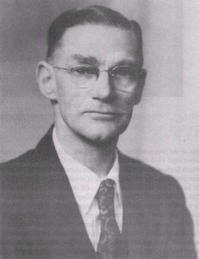


History of Research in the Bureau of Meteorology
Foreword
Preface
Introduction
Chapter 1: Germination and Growth
Chapter 2: Struggle, Competition and Emergence
The Struggle for Recognition
International Involvement
Local Cooperation
The Bureau Goes Solo
Conclusion
Retrospect
Appendix 1: Meteorology Act 1906
Appendix 2: Meteorology Act 1955
Appendix 3: Simpson Report
Appendix 4: Survey Questionnaire
Appendix 5: Bibliography
References
Index
Search
Help
Contact us

As a result of the protracted nature of the process of creating a new structure for the Bureau, it was not until 1948 that a new Chief Scientific Officer could be appointed to head the Bureau's Research Section. Even then the selection committee decided against appointing Gibbs to the position on the grounds of his lack of seniority, and chose J. C. Foley, a climatologist and former head of the Tasmanian region, to fill the post instead. At the same time they recommended that Gibbs should be appointed as Deputy Head of Research as soon as practicable (Warren [82]), in order that he might step into Foley's shoes once the latter had retired.
These developments did not prevent research staff from continuing their work on the frontal analysis of surface synoptic charts as a means of ensuring its adoption throughout the Bureau, and the issuing of broadscale analyses and prognoses for use by forecasting staff in the field. Additional work was carried out on the use and interpretation of radiosonde and radar data. At the same time D. E. Halsted oversaw the introduction of the new Hollerith punched card machines into the Bureau's Statistical Section, in order to transform its ancient data management and processing system into a reliable database. This database later proved to be invaluable for research purposes and assisted the advent of numerical weather prediction.
Since this involved very new technology the Bureau had to develop its own expertise to devise the best method of attacking the problem. For this reason the groundwork was carried out by Research Section personnel using data obtained from Bureau stations on Heard and Macquarie Islands. Once the new system was fully operational, it was applied to the entire Australian network (BOM [11]). Such a concentration on developmental matters and continuing staff shortages all but precluded any fundamental research until the mid 1950s, when group and individual programs commenced.
These difficulties and the appointments of Warren and subsequently E. W. Timcke as Director following Warren's unexpected death in 1950, prompted the committee of the Australian Branch of the IOP to write to the Minister for the Interior drawing his attention to the lack of scientific leadership within the Bureau. The committee suggested that the lack of professional direction led to a downgrading of the scientific credibility of the Bureau within international organisations and a failure to achieve an "enlightened and progressive attitude" within the Bureau (Martin [55]).

People in Bright Sparcs - Foley, James Charles; Gibbs, William James (Bill); Timcke, Edward Waldemar; Warren, Herbert Norman
 |
Bureau of Meteorology |  |
© Online Edition Australian Science and Technology Heritage Centre and Bureau of Meteorology 2001
Published by Australian Science and Technology Heritage Centre, using the Web Academic Resource Publisher
http://www.austehc.unimelb.edu.au/fam/0768.html